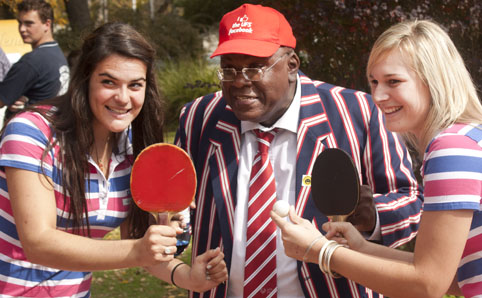 |
|
Prof. Jonathan Jansen, Vice-Chancellor and Rector, enjoying the Open Day with two of our students
Photo: Gerhard Louw
|
Low academic standards may be an accepted norm in society, but will by no means be tolerated at our university. This was the core message of the speech made by Prof. Jonathan Jansen, Vice-Chancellor and Rector, to learners, parents and teachers at our university’s annual Open Day, which took place on Monday, 2 May 2011.
Approximately 6 000 people gathered on our Main Campus in Bloemfontein, where they were introduced to senior staff members and deans and allowed to visit each of our seven faculties. Exhibitions from residences and student organisations also competed for the attention of prospective students.
Prof. Jansen assured attendees in the Callie Human Centre that they can look forward to quality education and an academic climate which aims at producing only the best academics and citizens for South Africa. He explained the steps that are being taken to improve the quality of education at the UFS, such as raised entrance criteria and compulsory class attendance in some of our modules.
He said the raised standards have already proven to increase pass rates, as well as attract high-quality students, as we managed to attract 146 students with six or more A-symbols in Grade 12 this year. This is also evidence in the university managing to deliver two Rhodes scholars, Sannah Mokone and Dirk Bester, in one year.
He also assured parents of their children’s safety, reminding them that not only is Bloemfontein one of the safest cities in South Africa, but students at the UFS are also taught to respect each other. “Students are treated as humans and everyone is treated the same. We are all Kovsies here.”
A record number of 1 000 applications for admission to the UFS in 2012 were received and bursaries to the value of R150 000 were given to prospective students during the day.
Media Release
4 May 2011
Issued by: Lacea Loader
Director: Strategic Communication
Tel: 051 401 2584
Cell: 083 645 2454
E-mail: news@ufs.ac.za